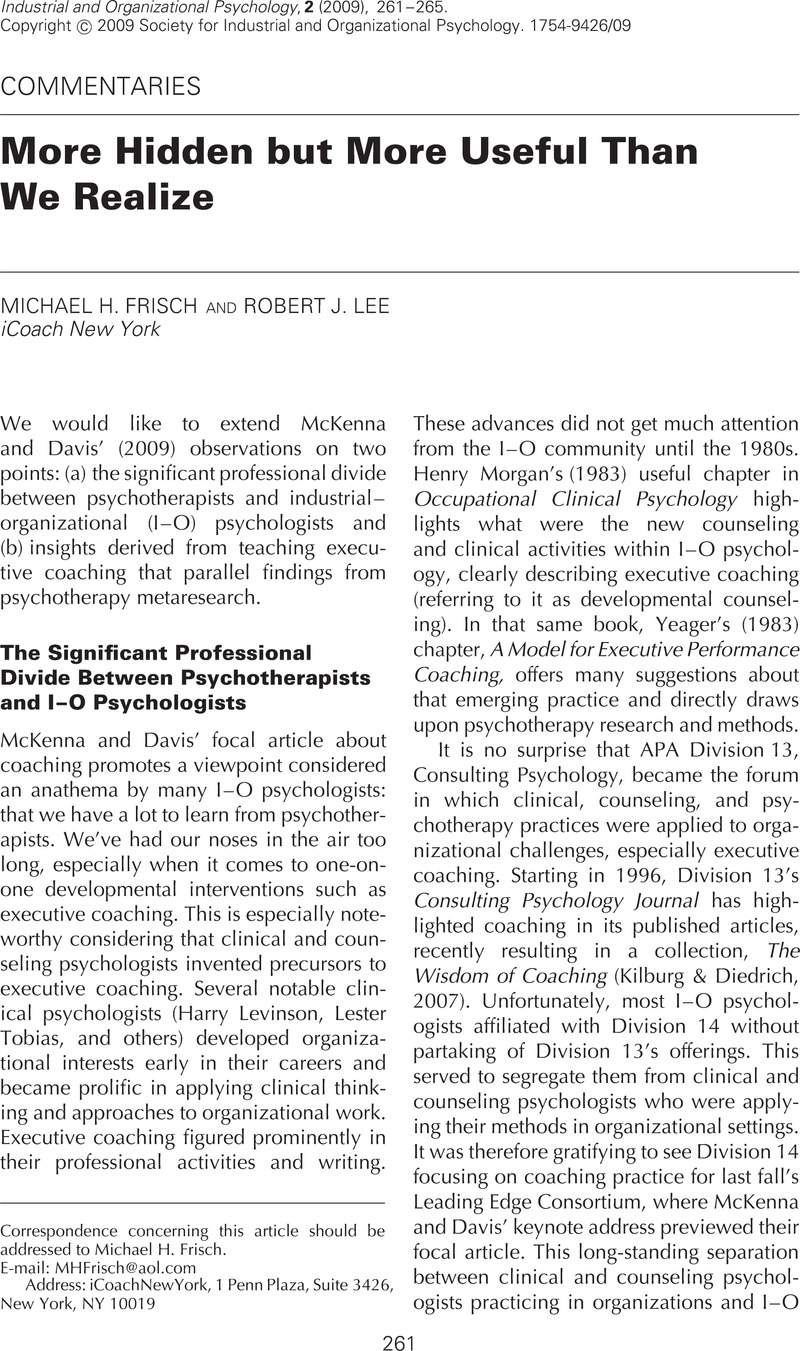Crossref Citations
This article has been cited by the following publications. This list is generated based on data provided by Crossref.
McKenna, D. Douglas
and
Davis, Sandra L.
2009.
What Is the Active Ingredients Equation for Success in Executive Coaching?.
Industrial and Organizational Psychology,
Vol. 2,
Issue. 3,
p.
297.
Lee, Robert J.
and
Frisch, Michael H.
2010.
Advancing Executive Coaching.
p.
47.
Smith, Ian M.
and
Brummel, Bradley J.
2013.
Investigating the role of the active ingredients in executive coaching.
Coaching: An International Journal of Theory, Research and Practice,
Vol. 6,
Issue. 1,
p.
57.



